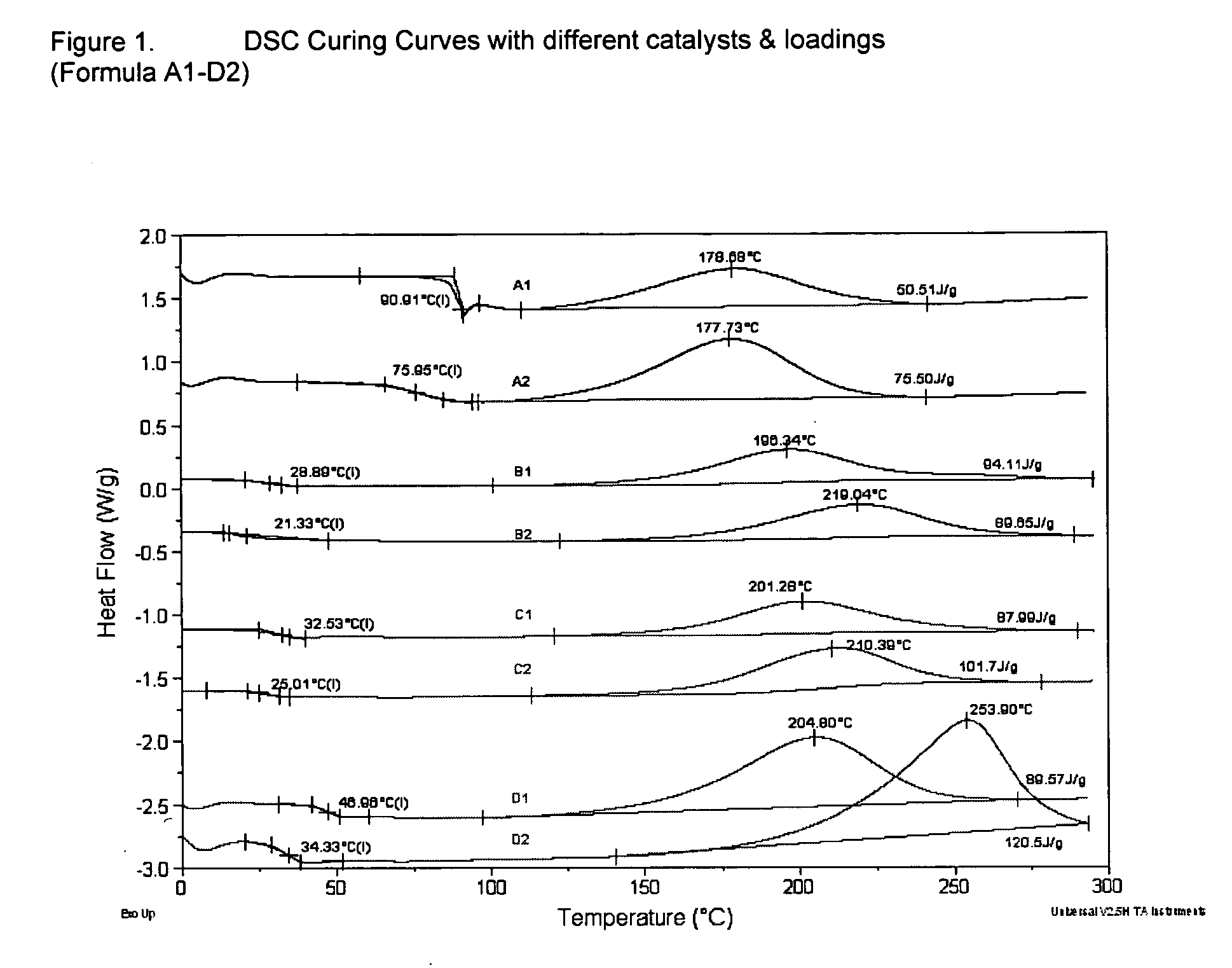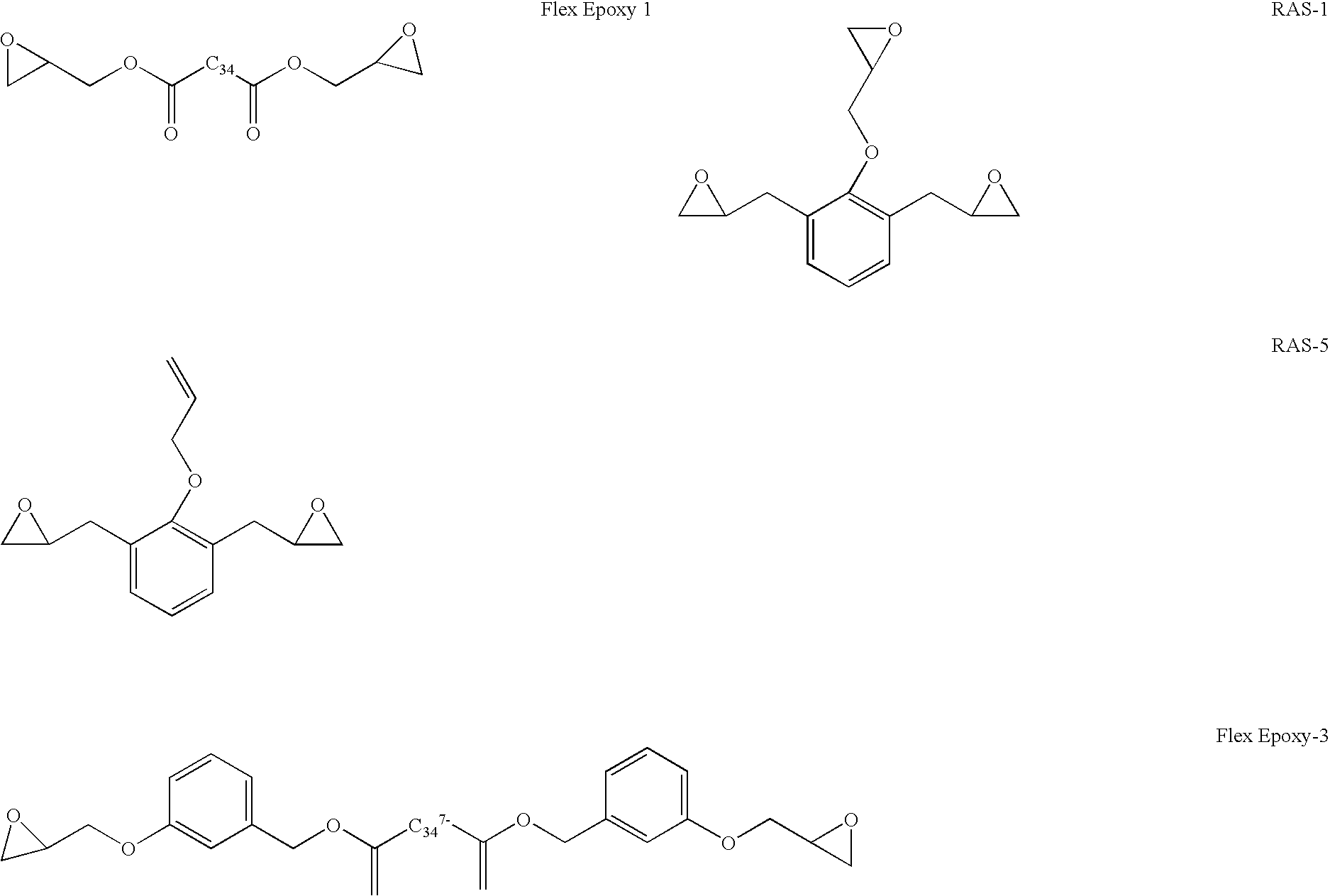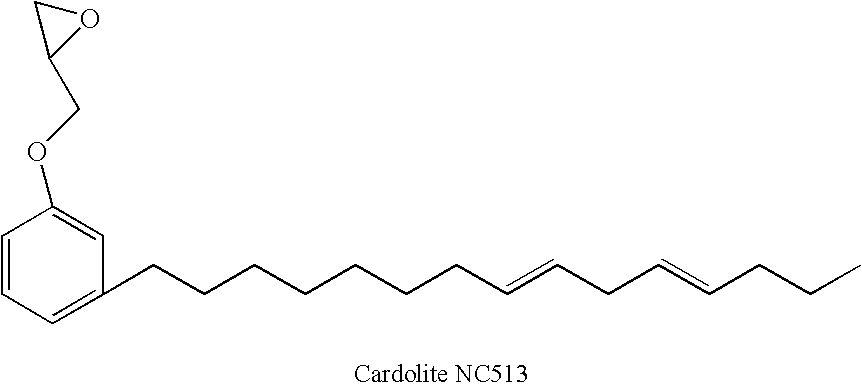B-stageable underfill encapsulant and method for its application
- Summary
- Abstract
- Description
- Claims
- Application Information
AI Technical Summary
Benefits of technology
Problems solved by technology
Method used
Image
Examples
example 1
[0030] An underfill encapsulant composition was manufactured comprising 50 parts each of EPON 826 (Shell Epoxy Resins) and HRJ2190 (Schenectady International) which were blended together with 53 parts of propylene glycol ethyl methyl acetate (PGMEA—Aldrich Chemical). The mixture was heated to 143° C. for 5 hours and 30 minutes. The resulting homogeneous blend was cooled to 25° C. After cooling, 108 parts of FUSOFE (Admatechs), 0.5 parts of BYK-W 9010 (BYK-Chemie), 0.5 parts of A-187 (Silquest), 1.8 parts of vinylmethyl siloxane-dimethylsiloxane copolymer (VDT-131 from Gelest, Inc.), and 0.4 parts of 2-phenyl-4-methyl imidazole (2P4MZ) / pyromellitic dianhydride (PMDA) adduct were added. The formulation was then dispersed in a Double Planetary Ross mixer for six hours. The mixed underfill material was bubble free, did not trap air on slow shearing, and had a viscosity of 30,000 cP (30 Pa's) at a shear rate of 1 s−1. The underfill material was then dispensed on glass cover slips (25 mm×...
example 2
[0031] Underfill compositions were formulated according to the method set out in Example 1. The material was dispensed on a piece of OSP Cu finished FR4 board. Eutectic solder balls of 20 mil diameter were placed in the material. Excess material was sheared off by placing a 25 mm×25 mm glass cover slip on top of the material and pushing the glass slip into contact with the solder balls. In this way, the thickness of the material was controlled to within 20 mil. After removing the slip, the assembly was placed on a vacuum oven at 120° C. and B-staged for 30 minutes. After the B-stage process, a smooth, void-free, and non-tacky coating was obtained. Since solvent was evaporated during the B-staging and the coating was about 20% thinner, the solder balls in the coating were protruding from the coating. After this specimen was placed face down on a 1′×3′ glass slide, the entire assembly was placed on a hot plate that was preheated to 160° C. After two minutes, this assembly was transfer...
example 3
[0032] To test the workability of the underfill material in an attachment method that also involves an unfilled epoxy / phenolic material, an underfill composition was formulated according to the process of Example 1. The material was then placed on 25 mm×25 mm glass cover slips and eutectic solder balls were placed on the coating which was then B-staged. An unfilled composition was also prepared. The unfilled epoxy / phenolic composition was formulated with 70 parts of RSL1739, 10 parts of Flex-1 and 10 parts of phenolic HRJ1166. These three resins were blended together without solvent and 0.5 parts of 2P4MZ / PMDA imidazole / anyhydride adduct and 10 parts of Corfree M2 were added. The resulting material was liquid at room temperature and had a viscosity of around 6,500 cP (6.5 Pa-s) at 1 s−1. A drop of the unfilled composition was placed on a piece of FR-4 board with Cu finish. A 25 mm×25 mm cover slip was coated with the filled epoxy / phenolic material, eutectic solder balls were placed ...
PUM
| Property | Measurement | Unit |
|---|---|---|
| Temperature | aaaaa | aaaaa |
| Temperature | aaaaa | aaaaa |
| Temperature | aaaaa | aaaaa |
Abstract
Description
Claims
Application Information
 Login to View More
Login to View More - R&D
- Intellectual Property
- Life Sciences
- Materials
- Tech Scout
- Unparalleled Data Quality
- Higher Quality Content
- 60% Fewer Hallucinations
Browse by: Latest US Patents, China's latest patents, Technical Efficacy Thesaurus, Application Domain, Technology Topic, Popular Technical Reports.
© 2025 PatSnap. All rights reserved.Legal|Privacy policy|Modern Slavery Act Transparency Statement|Sitemap|About US| Contact US: help@patsnap.com



